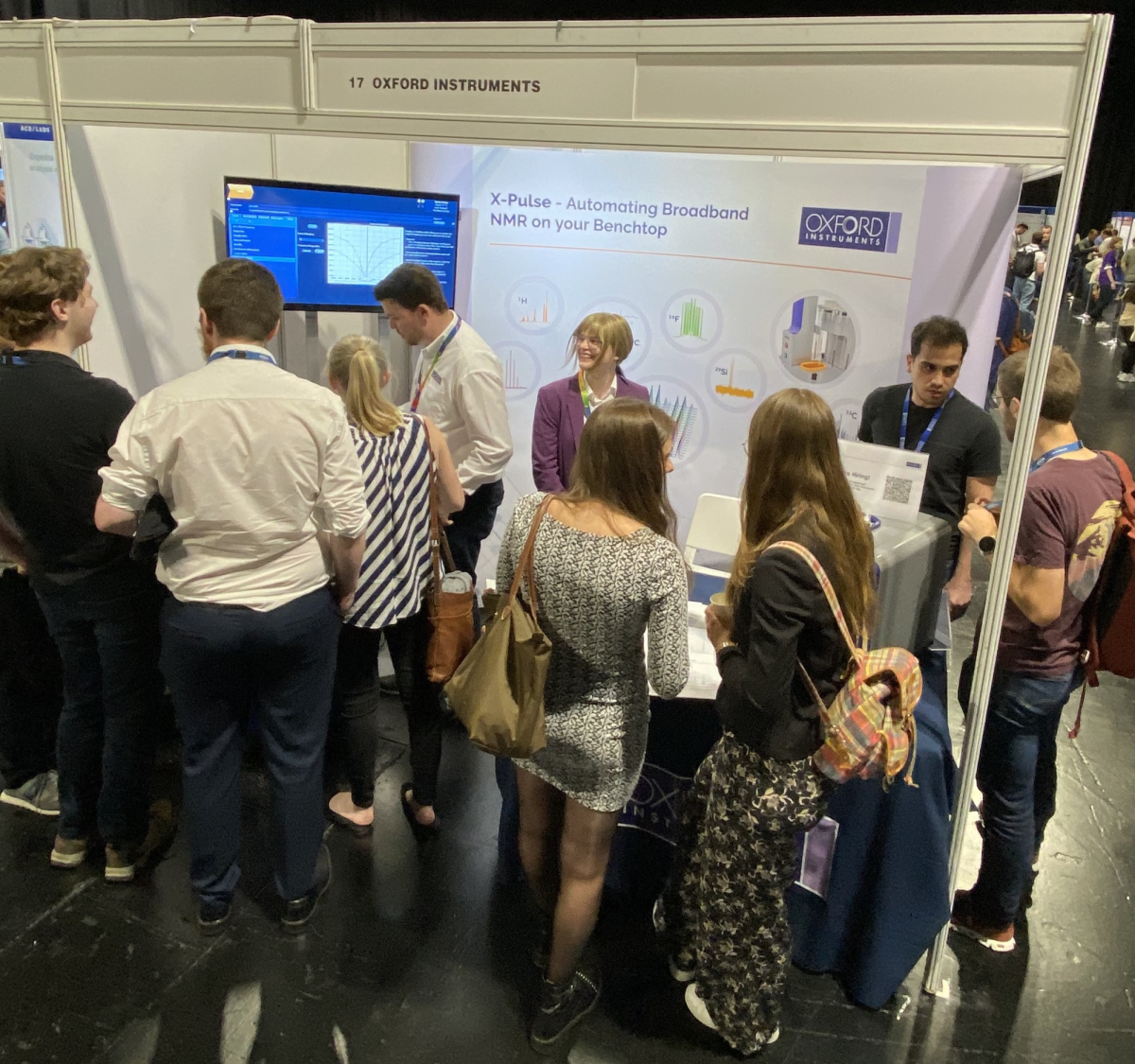I recently had the pleasure of attending the Euromar conference, which this year was held in Glasgow, Scotland, with my colleagues from Oxford Instruments. Euromar is one of the largest magnetic resonance gatherings in the world that takes place every year in a European country. The congress’ themes include nearly every magnetic resonance research area, including but not limited to:
- Nuclear Magnetic Resonance (NMR)
- Electron Paramagnetic Resonance (EPR)
- Magnetic Resonance Imaging (MRI)
- Hyperpolarization
- Theory and computation
Oxford Instruments had an exhibition booth, and we had some great interactions there with many of the conference delegates – thank you to those who visited us.

My overall experience
Having attended a few Euromar conferences during my PhD, I had an idea of what to expect, but I was still pleasantly surprised with the large volume of content and great research being presented through plenary talks, parallel talks, poster sessions, and workshops. In addition, I enjoyed great conversations with the members of magnetic resonance community during the refreshment breaks and social events. Unlike previous conferences, I didn’t present a research talk myself this year, but this gave me more time to see all the posters and engage with the presenters.
Reflections on the scientific content
Considering my interests, and development position in Magnetic Resonance at Oxford instruments, I left this conference with several highlights in my mind:
- Benchtop/low-field magnetic resonance research: this is clearly a very lively research area with a lot of ongoing developments. I was very impressed with the integration of several hyperpolarisation techniques, particularly, dissolution dynamic nuclear polarization (d-DNP) and photo-chemically induced dynamic nuclear polarization (photo-CIDNP) with benchtop systems. These methods could improve the relative low sensitivity of benchtop NMR drastically, as well as open new applications for these compact and low-cost instruments.
- New hardware developments: I was amazed with the number of novel developments concerning different parts of an NMR spectrometer. Some notable examples are design of compact electronics, compact magnets, novel resonators, and radio-frequency systems.
- New NMR pulse sequences: In order to fully take advantage of the newly developed systems, modifying already existing pulse sequences, and developing new ones, is essential. Fast 1D and 2D pulse sequences for reaction monitoring, and novel pulse sequences for better resolution and selectivity for specific applications are only a few examples that have stuck with me.
Next Euromar
The 20th
edition of Euromar will be held next year in Bilbao, Spain from the 30th June to the 5th July. I am already very much looking forward to it and I hope to see you there!
If you have any questions related to benchtop NMR systems, please feel free to get in touch with us.


